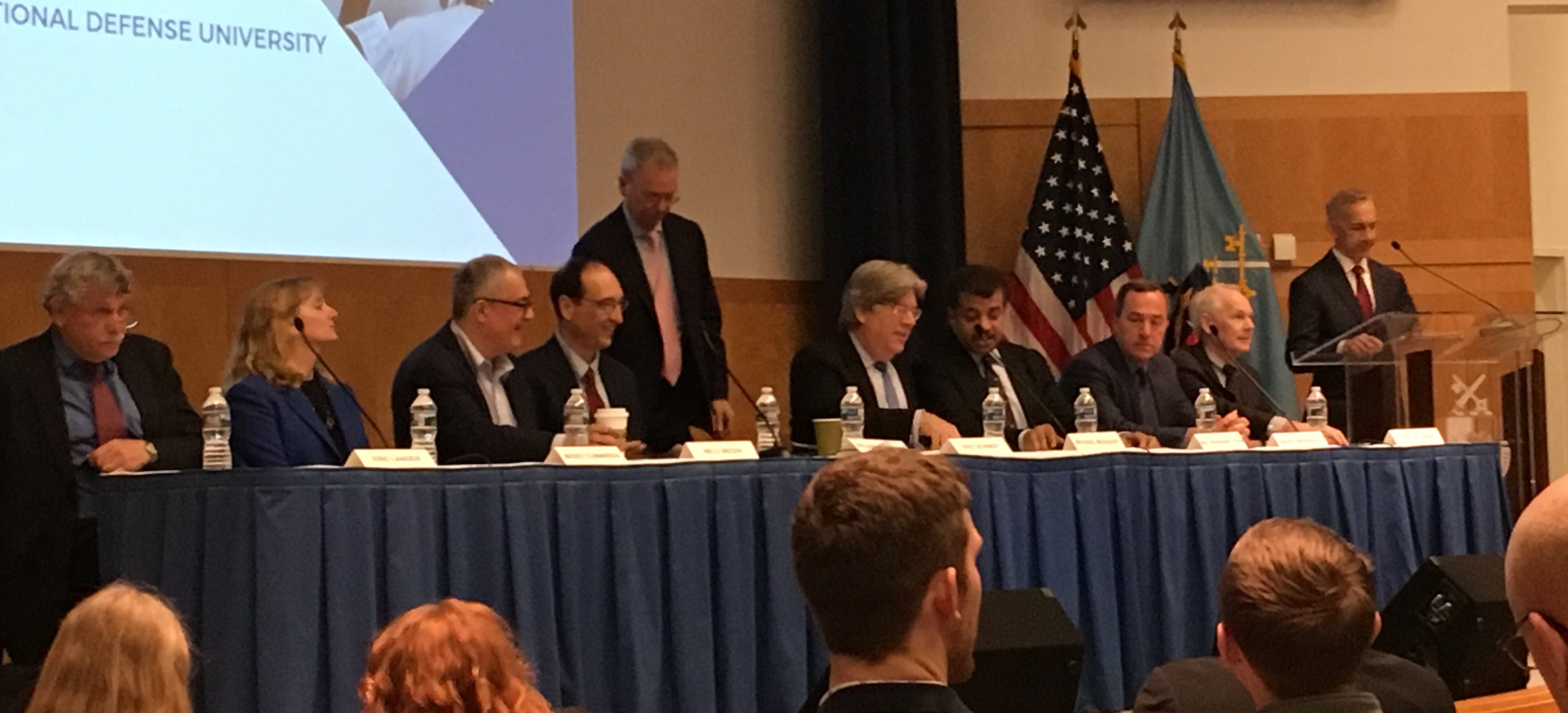Thursday morning, the Defense Department (DoD) took steps toward overhauling antiquated software acquisition processes and moving toward a modern software-based IT strategy with the progression of the Software Acquisition and Practices (SWAP) study, which is nearing submission.
During a public meeting hosted at National Defense University, the Defense Innovation Board (DIB) presented its revised report of the congressionally mandated study, and members commented that recommendations from the report would be implemented immediately. The DIB evaluated years of documents and procedures to produce 10 actionable recommendations – both for policy and practice – within DoD software acquisition and usage for the recently released report.
“What we are starting this afternoon is implementing what we’re learning,” Ellen M. Lord, Under Secretary of Defense for Acquisition and Sustainment at DoD, said.
The board plans to address the software conundrum inside DoD with a four-pronged approach. The four lines of effort, which will run contemporaneously, are: refactoring policy and processes; supporting cross-program and cross-service digital infrastructure; creating new paths for digital talent; and moving to how software is procured and developed.
When crafting their approach for the SWAP study, the board subcommittee prioritized speed, people-based processes and software-specific policy.
During the public comment section, members of the audience lauded the DIB for outlining clear steps in a thorough, digestible report.
Dr. Lisa Porter, Deputy Under Secretary of Defense for Research and Engineering at DoD, did voice concerns, however, about the incorporation of “fail quickly” – the exact phrase is only used once in the draft report – language and associated Agile processes if applied to the wrong situations. The Defense Department has many projects that cannot fail at all, she said.
“Before we run very fast, let’s make sure we’re going in the right direction,” Porter said.
The board noted that while the language might be new, previous recommendations for the Defense Department from other reports noted faster iteration as an area for improvement.
The board subcommittee based its report around fostering both the culture and processes necessary for a software-based DoD. The board’s recommendations include the expansion of training programs about software development for staff, the implementation of DevSecOps practices and the creation of a new appropriations category for software purchasing without categories.
“Software is not hardware, and we can’t just use the same process for software that we do for hardware,” Richard Murray, co-chair of the SWAP subcommittee and professor at California Institute of Technology, said “It just won’t work.”
The Defense Innovation Board undertook the proposal in fiscal year 2018, after Congress mandated the study inside of the National Defense Authorization Act. Michael McQuade served as the other co-chair, alongside Murray, of the SWAP report.
Lord emphasized that the tenets of the National Defense Strategy – increased lethality, strengthening alliances and departmental reform – could all be advanced by the recommendations offered in the document. Technologies like 5G could strengthen alliances, while rewriting DoD Instruction 5000.02, which currently governs Defense Department acquisitions, would allow the department to incorporate modern cybersecurity practices, Lord said.
But while the board unanimously voted in favor of the project at Thursday’s meetings, members acknowledged that the report represented ideas – not yet action. As noted, many published reports and policies had not been acted on or had been partially adhered to.
Those were the exact concerns of Neil deGrasse Tyson, the famous astrophysicist and DIB member. The SWAP project could be one that is easier written than completed, he warned.
“There was a day when it was, how many missiles are in your silo or how many troops are on the ground,” Tyson said. “And now we’re talking about people who might not be able to do 50 pushups in whatever is the boot camp their training is. Yet, they’ve become a fundamental part in the security of this nation. So I’m just curious, is the culture ready to embrace the career software person?”





Great article Isaac! I really like the quote “software is not hardware, and we can’t just use the same process for software that we do for hardware” because it is important we are understanding the correct processes for things like this. Its not as simple as just taking a process and using it on everything, we need to innovate.
Like this quote from Dr. Porter: “Before we run very fast, let’s make sure we’re going in the right direction.” The stakes seem higher for failure in the public sector than the private, especially in the DoD.